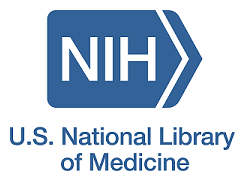

To Your Health: NLM update Transcript
Geography of cancer deaths: 03/27/2017

Greetings from the National Library of Medicine and MedlinePlus.gov
Regards to all our listeners!
I'm Rob Logan, Ph.D., senior staff, U.S. National Library of Medicine (NLM).
Here is what's new this week in To Your Health - a consumer health oriented podcast from NLM - that helps you use MedlinePlus to follow up on weekly topics.
An overall decline in cancer deaths across the U.S. is not uniform, and research suggests new patterns that could be used to improve future care, suggests a comprehensive study and accompanying editorial recently published in the Journal of the American Medical Association.
The study, based on cancer mortality records from across the U.S. from 1980-2014, suggests overall cancer deaths declined about 20 percent during the past three decades. The study finds the number of Americans who died from cancer fell from about 240 per 100,000 people in 1980 to 192 per 100,000 in 2014.
However, the editorial's authors note the declines in cancer deaths were not uniform across the U.S. Instead, the authors write (and we quote): 'substantial regional variation in cancer-specific mortality persists, with some of the largest gaps in preventable and curable cancers' (end of quote).
The editorial's authors add (and we quote): 'The most striking finding ....is that cancer-specific death rates are not only highly variable across counties in the current era but that changes in cancer-specific mortality over time since 1980 have varied substantially across counties' (end of quote).
Specifically, the study finds the highest cancer mortality rate is in Union County, FL. (about 503 deaths per 100,000 people); the lowest cancer death rate is in Summit County, CO (about 71 persons per 100,000). Summit County is in the Rocky Mountains; Union County is west of Jacksonville in northern Florida.
The editorial's authors note (and we quote): 'Clusters of high mortality are in several areas of the South, in Kentucky, West Virginia, Alabama and along the Mississippi River. Such regions should be targeted for evidence-based public health interventions and policies to improve cancer outcomes' (end of quote).
The editorial's authors note the study also differentiates the types of cancer where mortality is declining versus where rates are unchanged. For example, the study reports five year survival rates increased for Americans with liver cancer and malignant melanoma since 1980. In contrast, the mortality rates for mesothelioma and pancreatic cancer remained about the same.
By using new, more granular assessment tools, the study additionally suggests what types of cancer have the most deleterious impact on public health. For instance, by noting the number of years of life that are lost from colorectal, lung, breast, and prostate cancer deaths, the editorial's authors note these four cancers represent a comparatively significant proportion of the lost life years for all cancers. Paradoxically, the editorial's authors note colorectal, lung, breast, and prostate cancers are the most preventable and treatable of all cancers, which suggests each represents an opportunity for future public health interventions.
Incidentally, the study's findings are derived from the National Center for Health Statistics, which covers the entire U.S.
The editorial's authors conclude the study provides an unprecedented range and depth of findings to plan and target cancer initiatives to help Americans. The authors add the regions with the worst outcomes represent the greatest potential for improvement via primary prevention, screening, early detection, and timely treatment. For cancers that are more preventable and treatable, the editorial's authors explain the study suggests a need to provide (and we quote): 'better care coordination and linkages to financial counselors, charity care options, and medical assistance programs for patients vulnerable to the financial toxicity of treatment' (end of quote).
Meanwhile, the National Cancer Institute provides a helpful website about how cancer risks are measured within the 'prevention and risk factors' section of MedlinePlus.gov's cancer health topic page.
The National Cancer Institute adds helpful information about how cancer is prevented also within the 'prevention and risk factors' section of MedlinePlus.gov's cancer health topic page.
MedlinePlus.gov's cancer health topic page additionally provides links to the latest pertinent journal research articles, which are available in the 'journal articles' section. Links to relevant clinical trials that may be occurring in your area are available within the 'clinical trials' section. You can sign up to receive updates about cancer as they become available on MedlinePlus.gov.
To find MedlinePlus.gov's cancer health topic page, please type 'cancer' in the search box on MedlinePlus.gov's home page, then, click on 'cancer (National Library of Medicine).' MedlinePlus.gov additionally has health topic pages devoted to colorectal, lung, breast, and prostate cancer as well as other specific types of cancer.
Before I go, this reminder... MedlinePlus.gov is authoritative. It's free. We do not accept advertising .... and it is written to help you.
To find MedlinePlus.gov, just type 'MedlinePlus.gov' in any web browser, such as Firefox, Safari, Chrome, or Explorer, on any platform.
We encourage you to use MedlinePlus and please recommend it to your friends. MedlinePlus is available in English and Spanish. Some medical information is available in 48 other languages.
A written transcript of recent podcasts is available by typing 'To your health' in the search box on MedlinePlus.gov's home page.
The National Library of Medicine is one of 27 institutes and centers within the National Institutes of Health. The National Institutes of Health is part of the U.S. Department of Health and Human Services.
A disclaimer — the information presented in this program should not replace the medical advice of your physician. You should not use this information to diagnose or treat any disease without first consulting with your physician or other health care provider.
It was nice to be with you! Please join us here next week and here's to your health!





















.png)












No hay comentarios:
Publicar un comentario